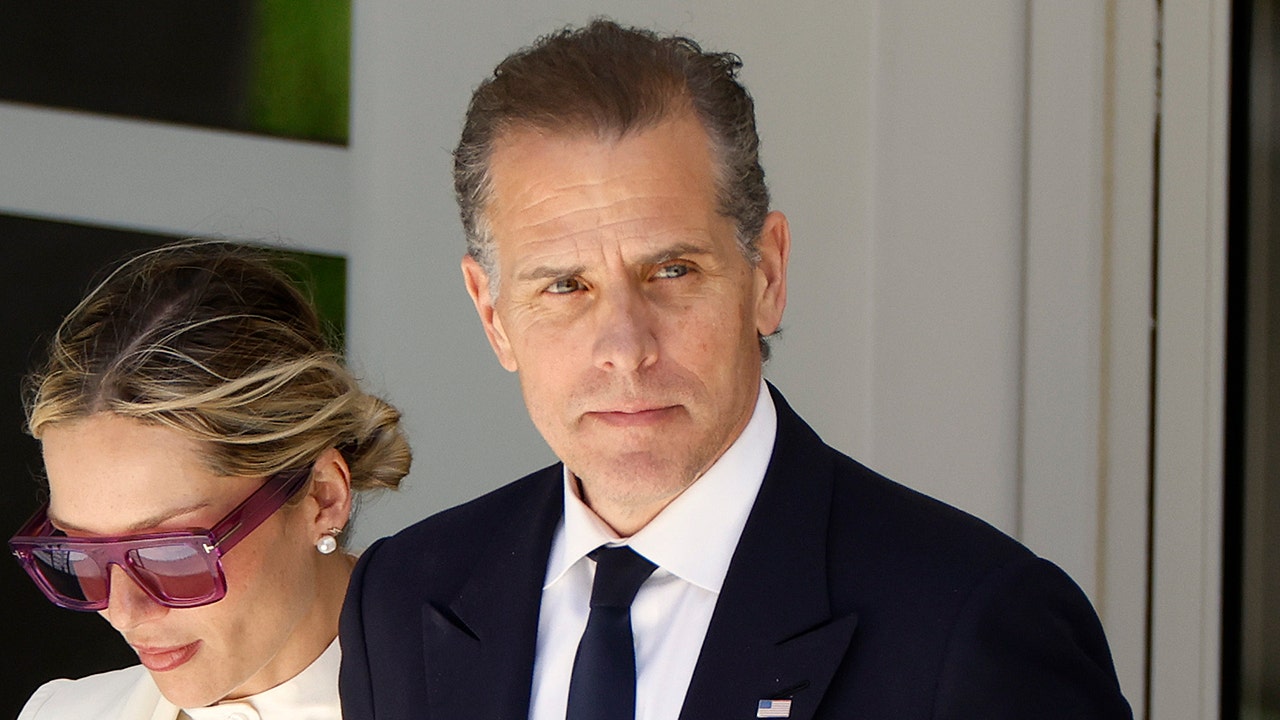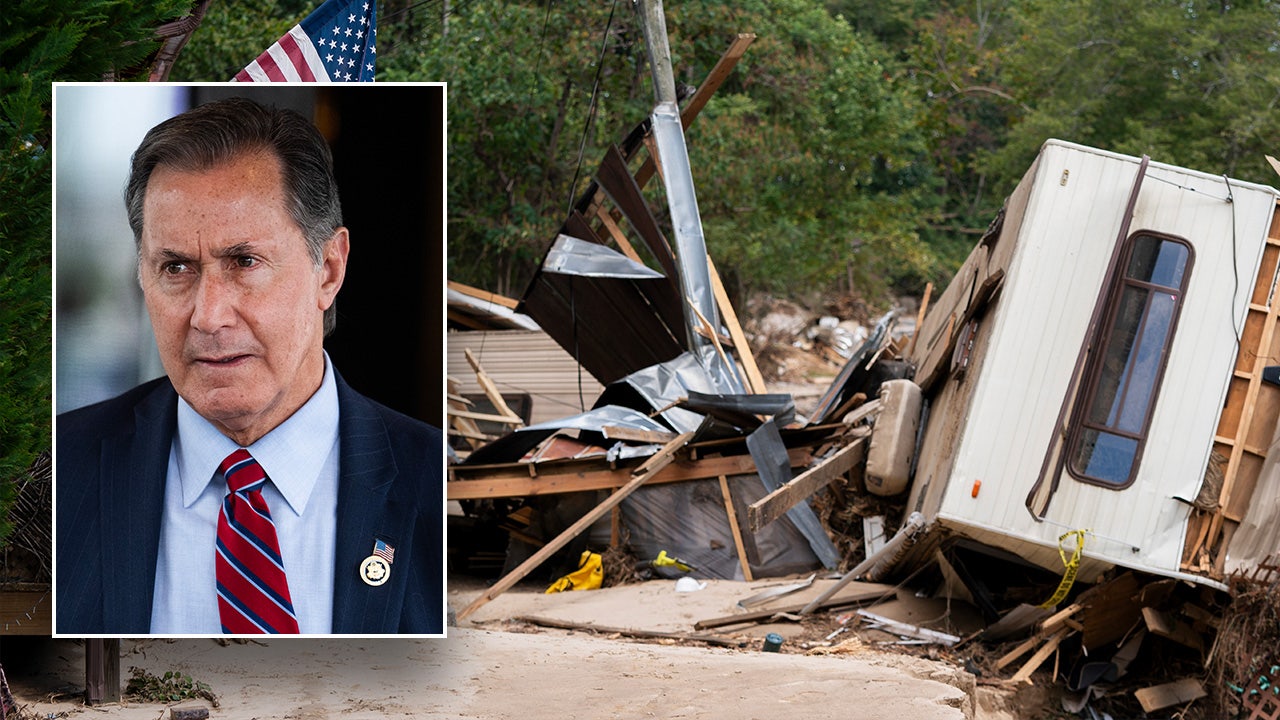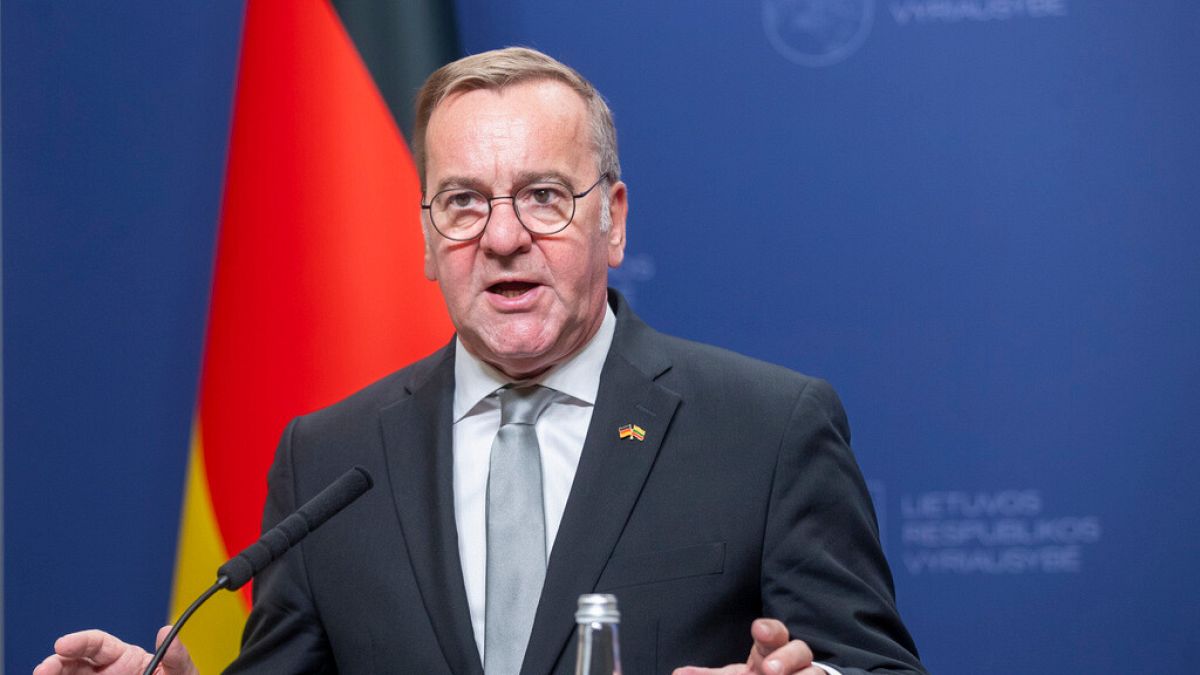World
Arsenal beats Man City in penalty shootout to win Community Shield after stoppage-time equalizer

LONDON (AP) — Arsenal has started the English season how the team hopes to end it — by getting the better of Manchester City.
Arsenal beat City 4-1 in a penalty shootout, after equalizing in the 101st minute in regulation time to draw 1-1, to win the Community Shield at Wembley Stadium on Sunday.
The match serves as a traditional curtain-raiser to the season and is typically played between the winners of last season’s Premier League and FA Cup. Because City won both as part of the title treble also containing the Champions League for the first time, Arsenal took part as the runner-up in the league and might have gained a psychological edge heading into the new campaign that starts on Friday.
“For us, it’s a statement,” Arsenal goalkeeper Aaron Ramsdale said. “It’s a marker to know we can go and beat Man City in a big game when it matters.”
Cole Palmer curled in a 78th-minute goal after coming off the bench to give City the lead, only for Leandro Trossard to score with a deflected shot in the 11th minute of second-half stoppage time, taking the game to penalties.
Games in English soccer are set to have more minutes added on in the upcoming season — like at the men’s World Cup in Qatar last year — after statistics showed the ball was only in play on average around 55 minutes during Premier League matches last season. Sunday’s finish was a demonstration of the impact that more stoppage time could have.
In the shootout, Kevin De Bruyne hit the crossbar for City and Rodri had an effort saved by Ramsdale, giving Fabio Vieira the opportunity to win it for Arsenal. The Portuguese playmaker curled it high into the corner. Martin Odegaard, Trossard and Bukayo Saka earlier scored penalties for Arsenal.
In 2005, another Vieira — Patrick — scored the winning penalty in the FA Cup final at Wembley Stadium.
Arsenal, which has won the Community Shield in five of the last 10 seasons, had the better of the chances in the 90 minutes, with offseason signing Kai Havertz — leading the line with Gabriel Jesus injured — having two close-range efforts saved in the first half and Saka shooting wide.
John Stones had a header from a corner tipped over from Ramsdale before Palmer’s goal.
City has now lost the Community Shield in three straight years, having been defeated by Leicester in 2021 and Liverpool in 2022.
Aside from the painful finish to the match, City manager Pep Guardiola might also be slightly concerned that star striker Erling Haaland was quiet again, having ended last season with one goal in eight games in all competitions.
One positive for City, however, was the sight of De Bruyne coming on for the final half hour for his first minutes since the Champions League final in June, when he came off with a hamstring injury.
Another was Palmer, a 21-year-old winger who is expected to have more game time in the coming season following the departure of Riyad Mahrez to Saudi Arabia last month.
The way he converted his opportunity — collecting a nod-down from De Bruyne, he cut inside onto his left foot and bent a finish into the far corner — showed he is more than capable of taking his chance under Guardiola.
Croatia defender Josko Gvardiol, who joined City for 90 million pounds ($99.2 million) on Saturday, was not involved.
Arsenal has strengthened by signing Havertz, midfielder Declan Rice and versatile defender Jurrien Timber and is expected to be one of City’s biggest title rivals again in the Premier League this season. Arsenal finished second last season only after a late collapse.
“I’m not sure what it’ll be like this season,” Ramsdale said. “But that mental block is gone. We’re ready to push on now.”
The match also provided an early sign of what to expect from match officials in the coming season, with players and coaches having agreed to a so-called “Participant Charter” that means they will face stricter sanctions for bad behavior in matches.
Arsenal manager Mikel Arteta was shown a yellow card in the first half for waving an imaginary yellow card after Rodri made a tactical foul to prevent a breakaway. Either side of that, two players — Arsenal’s Thomas Partey and City’s Julian Alvarez — were booked for kicking the ball away.
___
AP soccer: https://apnews.com/hub/soccer

World
Sweden, Finland and Norway release new advice on surviving war amid concerns over Russia, Ukraine escalation
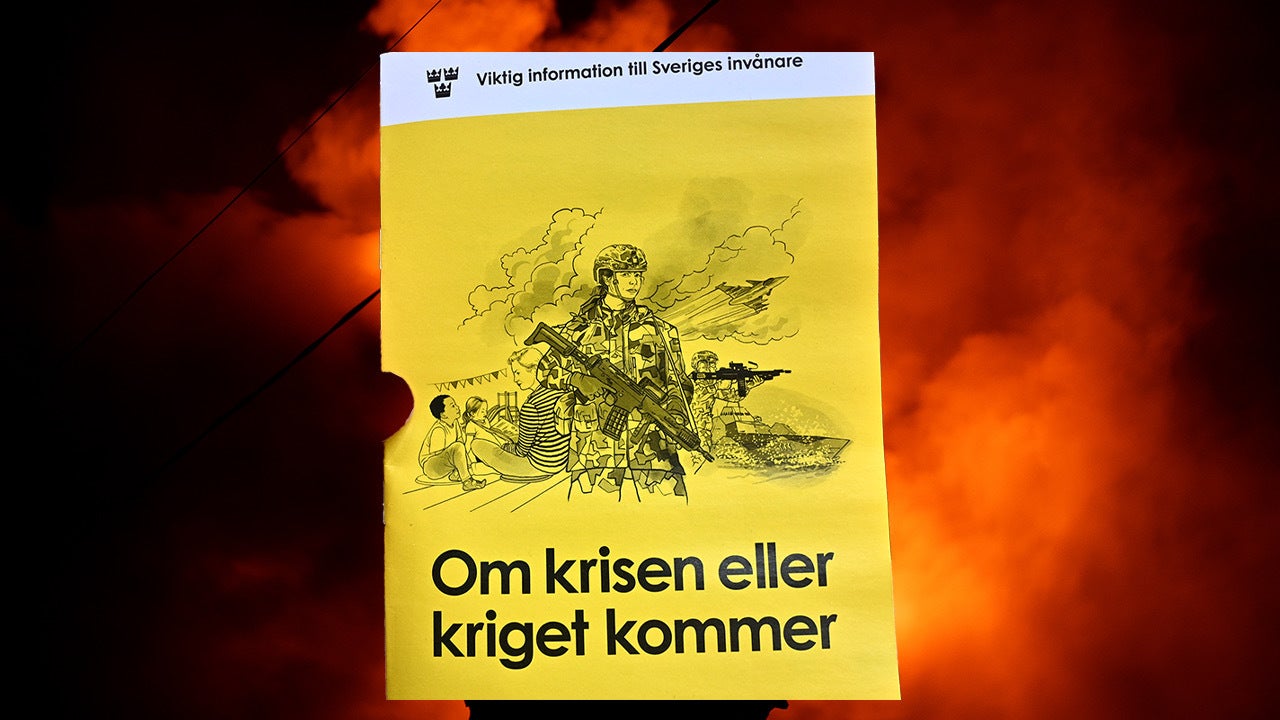
The once solidly “neutral” Nordic nations in Northern Europe are taking precautions to ready their citizens to be able to cope under war-like conditions as the security apparatus on the continent continues to deteriorate amid the war in Ukraine.
Sweden on Monday issued pamphlets to millions giving directions on what to do in the event that war breaks out or the nation is hit with an unexpected crisis.
The booklet, dubbed “In case of crisis or war,” has not only been updated from its previous version six years ago due to the worsening security situation in Europe, but it was also expanded and is nearly twice the size, reported the BBC.
The new version of the preparedness booklet “If the crisis or war comes” will be distributed to all households. (Claudio BRESCIANI/TT News Agency/ AFP/Sweden OUT via Getty Images)
US ALLIES ACCUSE RUSSIA OF ‘ESCALATING HYBRID ACTIVITIES’ AGAINST NATO, EU NATIONS AFTER DATA CABLES SEVERED
Issuing preparedness booklets out to its citizens is not new for Sweden, which has followed this practice since World War II when its first version titled “If War Comes” was reportedly distributed.
The guidance was updated during the Cold War, but one directive apparently highlighted in the middle of the booklet has been pushed forward noting that, “If Sweden is attacked by another country, we will never give up. All information to the effect that resistance is to cease is false.”
Sweden, like Finland before it, joined NATO earlier this year after first announcing its bid to do so in the aftermath of Russia’s invasion of Ukraine in 2022.
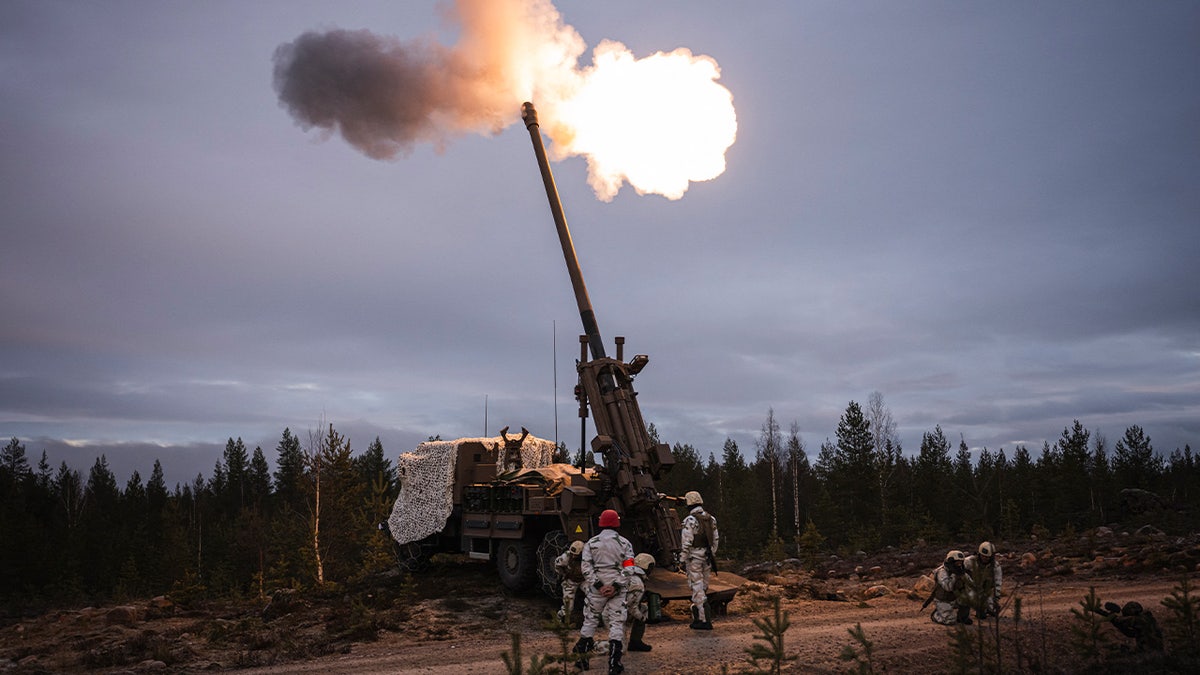
French soldiers from the 93rd mountain artillery regiment operate the Camion Equipe d’un Systeme d’Artillerie, also known as CAESAR, a French 155 mm, 52-caliber self-propelled howitzer that can fire 39/52 caliber NATO-standard, during the NATO Exercise Dynamic Front, on Nov. 17, 2024 near Rovaniemi, in Finnish Lapland. (JONATHAN NACKSTRAND/AFP via Getty Images)
Sweden’s Civil Defense Minister Carl-Oskar Bohlin has also been sounding the alarm that “there could be war in Sweden” in a move to urge officials to bolster Stockholm’s defenses faster.
Unlike Sweden, neighboring Finland maintained a stronger defensive posture given its shared border with Russia, despite maintaining a decades-long neutrality status following World War II.
1,000 DAYS OF WAR IN UKRAINE AS ZELENSKYY DOUBLES DOWN ON AERIAL OPTIONS WITH ATACMS, DRONES AND MISSILES
But Finland, which joined NATO in 2023, also distributed its crisis preparedness on Monday, though its guidance was released by means of a digital copy for its citizens due to the cost of printing the booklets, noted the BBC.

Finnish border guards speak to a group of Russian-speaking men trying to cross the border from Finland to Russia at Vaalimaa border check point in Virolahti, Finland, Dec. 15, 2023. (Vesa Moilanen/Lehtikuva/via REUTERS)
The Finnish government said it is “well-prepared for self-defense” and assured its citizens that hostile parties threatening Helsinki does not necessarily mean it will be presented through direct military force, noting that in the event of an emergency the Finns should be prepared in case of long power or water outages, as well as disruptions to banking or internet services.
Similarly, Norway, which was a NATO founding member in 1949, released a pamphlet urging Norwegians to be prepared to cope for up to a week in the event of war, crises or extreme weather.
Over 2 million copies were sent out, urging citizens to have canned foods, pasta, pet food, water, matches, candles, first aid kits and medicines in store, including iodine tablets.

Russian servicemen take a group photo near a US M2 Bradley fighting vehicle captured in Ukraine by Russian troops. Tanks and armored transports, previously used by the Armed Forces of Ukraine and NATO allies and captured during operations in Kharkiv and Sumy. These exhibits feature machinery from the USA, UK, Australia, Canada, France, Turkey, Finland, and Ukraine were on display in St. Petersburg. (Artem Priakhin/SOPA Images/LightRocket via Getty Images)
“The tablets can protect against radioactive iodine in the event of nuclear accidents and must only be taken on instruction from the authorities,” the Norwegian government said in its instructions.
Denmark also encouraged its citizens over the summer to ensure they had three-days’ worth of essential items in store to help get through a crisis situation.
Western leaders continue to monitor Russia’s war in Ukraine very closely, and have warned Moscow that any attack on a NATO nation will result in a united response from all 32 nations.
World
Why are New Zealand’s Maori protesting over colonial-era treaty bill?

A fight for Maori rights drew 42,000 protesters to the New Zealand Parliament in the capital Wellington on Tuesday.
A nine-day-long hikoi, or peaceful march – a tradition of the Maori – was undertaken in protest against a bill that seeks to reinterpret the country’s 184-year-old founding Treaty of Waitangi, which was signed between British colonisers and the Indigenous Maori people.
Some had also been peacefully demonstrating outside the Parliament building for nine days before the protest concluded on Tuesday.
On November 14, the controversial Treaty Principles Bill was introduced in Parliament for a preliminary vote. Maori parliamentarians staged a haka (a Maori ceremonial dance) to disrupt the vote, temporarily halting parliamentary proceedings.
So, what was the Treaty of Waitangi, what are the proposals for altering it, and why has it become a flashpoint for protests in New Zealand?
Who are the Maori?
The Maori people are the original residents of the two large islands now known as New Zealand, having lived there for several centuries.
The Maori came to the uninhabited islands of New Zealand from East Polynesia on canoe voyages in the 1300s. Over hundreds of years of isolation, they developed their own distinct culture and language. Maori people speak te reo Maori and have different tribes, or iwi, spread throughout the country.
The two islands were originally called Aotearoa by the Maori. The name New Zealand was given to Aotearoa by British colonisers who took control under the treaty in 1840.
New Zealand became independent from the United Kingdom in 1947. However, this was after Maori people had suffered mass killings, land grabs and cultural erasure over more than 100 years at the hands of colonial settlers.
There are currently 978,246 Maori in New Zealand, constituting around 19 percent of the country’s population of 5.3 million. They are represented by Te Pati Maori, or the Maori Party, which currently holds six of the 123 seats in Parliament.

What was the Treaty of Waitangi?
On February 6, 1840, the Treaty of Waitangi, also called Te Tiriti o Waitangi or just Te Tiriti, was signed between the British Crown and around 500 Maori chiefs, or rangatira. The treaty was the founding document of New Zealand and officially made New Zealand a British colony.
While the treaty was presented as a measure to resolve differences between the Maori and the British, the English and te reo versions of the treaty actually feature some stark differences.
The te reo Maori version guarantees “rangatiratanga” to the Maori chiefs. This translates to “self-determination” and guarantees the Maori people the right to govern themselves.
However, the English translation says that the Maori chiefs “cede to Her Majesty the Queen of England absolutely and without reservation all the rights and powers of Sovereignty”, making no mention of self-rule for the Maori.
The English translation does guarantee the Maori “full exclusive and undisturbed possession of their Lands and Estates Forests Fisheries”.
“The English draft talks about the British settlers having full authority and control over Maori in the whole country,” Kassie Hartendorp, a Maori community organiser and director at community campaigning organisation ActionStation Aotearoa, told Al Jazeera.
Hartendorp explained that the te reo version includes the term “kawanatanga”, which in historical and linguistic context “gives British settlers the opportunity to set up their own government structure to govern their own people but they would not limit the sovereignty of Indigenous people”.
“We never ceded sovereignty, we never handed it over. We gave a generous invitation to new settlers to create their own government because they were unruly and lawless at the time,” said Hartendorp.
In the decades after 1840, however, 90 percent of Maori land was taken by the British Crown. Both versions of the treaty have been repeatedly breached and Maori people have continued to suffer injustice in New Zealand even after independence.
In 1975, the Waitangi Tribunal was established as a permanent body to adjudicate treaty matters. The tribunal attempts to remedy treaty breaches and navigate differences between the treaty’s two texts.
Over time, billions of dollars have been negotiated in settlements over breaches of the treaty, particularly relating to the widespread seizure of Maori land.
However, other injustices have also occurred. Between 1950 and 2019, about 200,000 children, young people and vulnerable adults were subjected to physical and sexual abuse in state and church care, and a commission found Maori children were more vulnerable to the abuse than others.
On November 12 this year, Prime Minister Christopher Luxon issued an apology to these victims, but it was criticised by Maori survivors for being inadequate. One criticism was that the apology did not take the treaty into account. While the treaty’s principles are not set in stone and are flexible, it is a significant historical document that upholds Maori rights.
What does the Treaty Principles Bill propose?
The Treaty Principles Bill was introduced by Member of Parliament David Seymour of the libertarian ACT Party, a minor partner in New Zealand’s coalition government. Seymour himself is Maori. The party launched a public information campaign about the bill on February 7 this year.
The ACT Party asserts that the treaty has been misinterpreted over the decades and that this has led to the formation of a dual system for New Zealanders, where Maori and white New Zealanders have different political and legal rights. Seymour says that misinterpretations of the treaty’s meaning have effectively given Maori people special treatment. The bill calls for an end to “division by race”.
Seymour said that the principle of “ethnic quotas in public institutions”, for example, is contrary to the principle of equality.
The bill seeks to set specific definitions of the treaty’s principles, which are currently flexible and open to interpretation. These principles would then apply to all New Zealanders equally, whether they are Maori or not.
According to Together for Te Tiriti, an initiative led by ActionStation Aotearoa, the bill will allow the New Zealand government to govern all New Zealanders and consider all New Zealanders equal under the law. Activists say this will effectively disadvantage the Maori people because they have been historically oppressed.
Many, including the Waitangi Tribunal, say this will lead to the erosion of Maori rights. A statement by ActionStation Aotearoa says that the bill’s principles “do not at all reflect the meaning” of the Treaty of Waitangi.

Why is the bill so controversial?
The bill is strongly opposed by political parties in New Zealand on both the left and the right, and Maori people have criticised it on the basis that it undermines the treaty and its interpretation.
Gideon Porter, a Maori journalist from New Zealand, told Al Jazeera that most Maori, as well as historians and legal experts, agree that the bill is an “attempt to redefine decades of exhaustive research and negotiated understandings of what constitute ‘principles’ of the treaty”.
Porter added that those critical of the bill believe “the ACT Party within this coalition government is taking upon itself to try and engineer things so that Parliament gets to act as judge, jury and executioner”.
In the eyes of most Maori, he said, the ACT Party is “simply hiding its racism behind a facade of ‘we are all New Zealanders with equal rights’ mantra”.
The Waitangi Tribunal released a report on August 16 saying that it found the bill “breached the Treaty principles of partnership and reciprocity, active protection, good government, equity, redress, and the … guarantee of rangatiratanga”.
Another report by the tribunal seen by The Guardian newspaper said: “If this bill were to be enacted, it would be the worst, most comprehensive breach of the Treaty … in modern times.”
What process must the bill go through now?
For a bill to become law in New Zealand, it must go through three rounds in Parliament: first when it is introduced, then when MPs suggest amendments and finally, when they vote on the amended bill. Since the total number of MPs is 123, at least 62 votes are needed for a bill to pass, David MacDonald, a political science professor at the University of Guelph in Canada, told Al Jazeera.
Besides the six Maori Party seats, the New Zealand Parliament includes 34 seats held by the New Zealand Labour Party; 14 seats held by the Green Party of Aotearoa; 49 seats held by the National Party; 11 seats held by the ACT Party; and eight seats held by the New Zealand First Party.
“The National Party leaders including the PM and other cabinet ministers and the leaders of the other coalition party [New Zealand] First have all said they won’t support the bill beyond the committee stage. It is highly unlikely that the bill will receive support from any party other than ACT,” MacDonald said.
When the bill was heard for its first round in Parliament this week, Maori party lawmaker Hana-Rawhiti Maipi-Clarke tore up her copy of the legislation and led the haka ceremonial dance.
Is the bill likely to pass?
The chances of the bill becoming law are “zero”, Porter said.
He said the ACT’s coalition partners have “adamantly promised” to vote down the bill in the next stage. Additionally, all the opposition parties will also vote against it.
“They only agreed to allow it to go this far as part of their ‘coalition agreement’ so they could govern,” Porter said.
New Zealand’s current coalition government was formed in November 2023 after an election that took place a month before. It comprises the National Party, ACT and New Zealand First.
While right-wing parties have not given a specific reason why they will oppose the bill, Hartendorp said New Zealand First and the New Zealand National Party would likely vote in line with public opinion, which largely opposes it.
Why are people protesting if the bill is doomed to fail?
The protests are not against the bill alone.
“This latest march is a protest against many coalition government anti-Maori initiatives,” Porter said.
Many believe that the conservative coalition government, which took office in November 2023, has taken measures to remove “race-based politics”. The Maori people are not happy with this and believe that it will undermine their rights.
These measures include removing a law that gave the Maori a say in environmental matters. The government also abolished the Maori Health Authority in February this year.
Despite the bill being highly likely to fail, many believe that just by allowing the bill to be tabled in Parliament, the coalition government has ignited dangerous social division.
For example, former conservative Prime Minister Jenny Shipley has said that just putting forth the bill is sowing division in New Zealand.
World
TVLine Items: My Life With the Walter Boys Adds 5, Carrie Underwood Concert Special and More

ad
-

 News1 week ago
News1 week agoHerbert Smith Freehills to merge with US-based law firm Kramer Levin
-
/cdn.vox-cdn.com/uploads/chorus_asset/file/25724877/Super_Nintendo_World.png)
/cdn.vox-cdn.com/uploads/chorus_asset/file/25724877/Super_Nintendo_World.png) Technology1 week ago
Technology1 week agoThe next Nintendo Direct is all about Super Nintendo World’s Donkey Kong Country
-
Business6 days ago
Column: OpenAI just scored a huge victory in a copyright case … or did it?
-

 Health6 days ago
Health6 days agoBird flu leaves teen in critical condition after country's first reported case
-

 Business3 days ago
Business3 days agoColumn: Molly White's message for journalists going freelance — be ready for the pitfalls
-
Politics1 week ago
Editorial: Abortion was on ballots across the country in this election. The results are encouraging
-
World7 days ago
Sarah Palin, NY Times Have Explored Settlement, as Judge Sets Defamation Retrial
-

 Politics2 days ago
Politics2 days agoTrump taps FCC member Brendan Carr to lead agency: 'Warrior for Free Speech'








/cdn.vox-cdn.com/uploads/chorus_asset/file/25742142/Aqara_Valve_Controller_T1.jpg)





